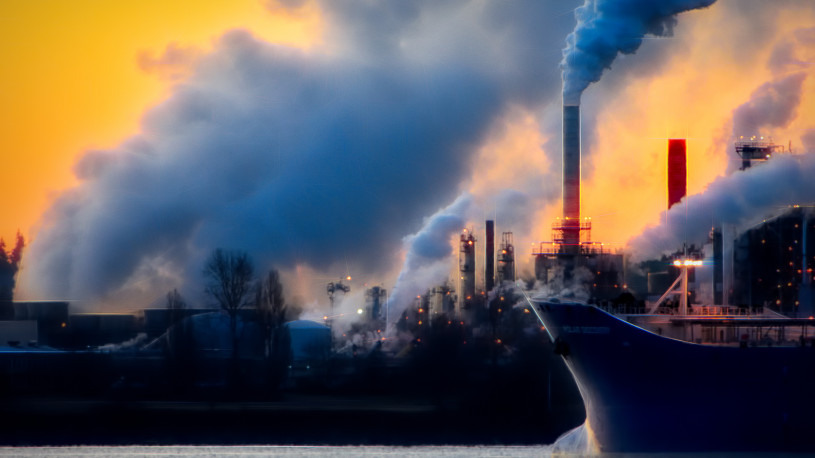-
Is it Time for You to Rethink Your Detergent Products and Packaging?
 Continue Reading
Continue ReadingPlastic packaging companies and detergent manufacturers may be forced to rethink their products following an increase in the number of children injured by eating detergent pods.
According to many news outlets, including the Washington Post, thousands of American children are harmed each year after ingesting the brightly coloured plastic packs of soap. CNN even reports of the death of a 7 month old boy in 2013 in Florida after he came into contact with one of the pods.
Tragic stories like this have led to the instigation of a formal study on the matter as reported by the journal ‘Pediatrics’. The study entitled ‘Pediatric Exposure to Laundry Detergent Pods’, found that, “There were 17 230 children younger than 6 years exposed to laundry detergent pods in 2012–2013. From March 2012 to April 2013, the monthly number of exposures increased by 645.3%, followed by a 25.1% decrease from April to December 2013. Children younger than 3 years accounted for 73.5% of cases. The major route of exposure was ingestion, accounting for 79.7% of cases.”
Leading the report to conclude that, “Laundry detergent pods pose a serious poisoning risk to young children. This nationwide study underscores the need for increased efforts to prevent exposure of young children to these products, which may include improvements in product packaging and labeling, development of a voluntary product safety standard, and public education. Product constituent reformulation is another potential strategy to mitigate the severity of clinical effects of laundry detergent pod exposure.”
Now the recommendation for legislating the pods has reached US government, where, according to thehill.com, two democratic senators (Dick Durbin and Richard Blumenthal) have begun the process to require “the Consumer Product Safety Commission to create better packaging and safety standards for the soap capsules.”
As Durbin said in his press release announcing the bill’s introduction, “Making the design and color of packets less appealing to children, making safer, child-resistant packaging and adding proper warning labels are common-sense protections for consumers similar to those for countless other household products. We can still have convenience without sacrificing safety for children and families.”
In response to the report and the bill’s introduction, the American Cleaning Institute said that the detergent industry was already adapting to avoid further injuries, stating that, “…manufacturers have made major changes to their packaging including the addition of easy-to-understand safety icons, improving warning labels to advise proper use and storage instructions, and changing to opaque packaging so the single dose packets are not visible from the outside.”
How much responsibility for these accidents is with the parents and how much blame should be placed on the detergent industry is a matter of opinion. And whether the bill is passed or not, the number of children being injured is of great cause for concern for everyone. But those within the industry must now be wondering, “Is it time for us to rethink our detergent products and packaging?”
-
Is the US Agchem Industry in for a ‘Rough Decade’?
 Continue Reading
Continue ReadingAgrochemical producers and traders are becoming increasingly concerned for the future of their industry following the release of a report by the Food and Agricultural Policy Research Institute (FAPRI) which warns that, “The next 10 years could be difficult for farmers.” With bad times predicted for the US agricultural industry, then Agchem suppliers are likely to have an equally tough time over the coming years.
In a recent press release, Pat Westhoff, director of FAPRI at the University of Missouri said, “We are looking at several years of pretty tight financial situation for U.S. agriculture. Farm income is less than half of the 2013 peak and we expect it to remain low for the next several years.”
The institute, which is also affiliated with Iowa State University, blames the predicted drop in US farm revenue on falling crop and livestock prices that have not been offset by cost reductions.
The full report can be read here, but it makes for difficult reading, as it outlines various predictions of pricing models, explained as follows, “The FAPRI baseline uses a model with different variables to project a range of market outcomes for 2017-2025. Modest increases in net farm income are projected in the baseline report, but when adjusting for inflation, 2025 net farm income will be about the same as it was in 2015.”
Agchem industry heads are concerned about the knock on effect of decreasing farm incomes on fertiliser and farm chemical prices, especially as it comes at a time when the Chinese economy is also feared to be heading towards a downturn.
Darren Hudson, an agricultural economist at Texas Tech, highlighted these fears when he said, “Because China purchases so many imported agricultural goods when its economy is healthy, a not-so-healthy Chinese economy is bad news for the global market. The Chinese are very large consumers of U.S. ag products, so if there is a serious downturn it will have a significant effect on U.S. agriculture”
It seems that there is little that either farmers or Agchem producers can do to improve the situation given the global forces that are keeping prices low. As Hudson further explained to journalists when he said that, “The market adjustment that is occurring is doing that as a result of the uncertainty that exists around Chinese economic growth and related things like exchange rates and energy (costs).”
For fertiliser, pesticide and herbicide traders are now having to decide whether the challenging times ahead requires them to make their own cost savings. Or will greater competition for sales in the coming decade mean that now is the best time to increase marketing efforts?
-
5 Tips on How to Trade Chemicals in China
 Continue Reading
Continue ReadingSo you’re thinking about trading chemicals in China. Well, who wouldn’t? The spectacular rates of growth seen there over the last 20 years have raised everyone’s eyebrows. And whilst there is some uncertainty over the state of the economy today, according to the Wall Street Journal 2015 still saw GDP grow by 6.9%.
The figure for chemical industry growth for the coming years may well be much higher given that, according to a recent PWC report, “Global sales of chemicals more than doubled over the last decade, hitting a record US$5.2 trillion by 2013 (americanchemistry.com). Emerging economies drove a large share of these gains, most notably in China, where chemicals sales expanded at an average compound annual rate of 26 percent over that period.”
The huge expansion of megacities has caused demand for chemical raw materials on an unprecedented scale. Added to that is China’s enormous manufacturing output of everything from clothing to food stuffs, from electronics to cars. China needs chemical suppliers.
So what do you need to know to gain access to the Chinese chemicals market? Well here are a few tips.
- Find a Chinese Chemicals Trading Partner
The first and most important thing anyone hoping to trade chemicals in China can do is to find a local partner. The best partner will be an established Chinese-owned chemicals company, or a businessperson with good contacts who can navigate the complicated regulations and legal processes and perhaps most importantly, deal with the Chinese government directly.
As Peter Adriaens, a professor at the University of Michigan’s Stephen M. Ross School of Business and a professor of entrepreneurship at Sichuan University’s Suzhou Institute in Suzhou, says “It’s not like you just get money and a product and you’re up and running, like in America,”
A good partner may be an incorporated company that is about the same size as your business, it should be at least partly Chinese-owned, and well-connected in the Chinese chemicals market, Adriaens said.
Many firms wanting to access the Chinese chemicals market locate a partner through an online marketplace such as Spotchemi.eu. This website (which hosts this blog) enables you to find a buyer or seller for any chemical product you want. Plus it has a huge database of chemical buyers and sellers which can assist you in finding the chemicals business partner you need.
- Understand the Business Culture
China is culturally a long way from America or Europe, and more than a world away when it comes to doing business there. In America, contracts, deals and other arrangements are fairly transparent between businesses working together. This is less true in China.
Shan Nair, co-founder of Nair & Co. (now trading as Radius) a service outsourcing company, said that understanding how Chinese business culture works is vital for anyone who wants to trade there.
“If you know what you’re doing, it’s not hard, but if you don’t know what you’re doing, it can be time consuming and expensive,” Nair explained. “There are some complications, but if you’re in contact with someone who is used to the obstacles, it can be quite straightforward.”
Again the need for a Chinese partner or someone who knows the chemicals market is important.
- Understand the Bureaucracy
China is famous for its complicated bureaucratic web, and it has gained a reputation as a place where deals and contracts are often treated more like suggestions than concrete agreements.
In recent years, however, the Chinese chemical industry climate and regulatory structure has improved, and experts and business people say that with a little effort and knowledge, chemicals trading in China is now easier than ever.
- Innovation
There was a time when people asked if China was innovative, but not anymore. Today, Chinese chemists are at the forefront of scientific research, and the global impact of that innovation will be increasingly visible. Whilst hundreds of midsize companies in the Chinese industrial chemical sector are providing ever-more-serious competition to Fortune 1000 competitors.
They are no longer focused simply on cheap, and have an increased understanding of the importance of quality and reliability. They are also a growing force in the speciality and bespoke chemical sectors, as well as taking larger market share in biotech, pharmaceutical and medical technology.
To stay competitive in this area, ensure your chemical products are of the quality being looked for. Whilst it can be tempting to trade in cheaper standard items, quality does show and China is now looking for quality.
- Corruption
Whilst corruption has uptill now been a major problem in China, businesses will now need to recognize that anti-corruption initiatives and the rule of law are now long-term foundational elements of the political leadership’s platform. President Xi has consistently declared the objective of advancing the rule of law.
Such openness is a blessing to those wanting to break into the Chinese chemicals market. It is creating a fairer playing field where the best quality and best priced chemicals get the deal.
China is no longer the Wild West of the chemical industry that it was before, but it is still a land of opportunity for well-informed chemical traders. You can take advantage of globalization to sell your chemical products, and with the right help, it won’t be as scary as you think.
